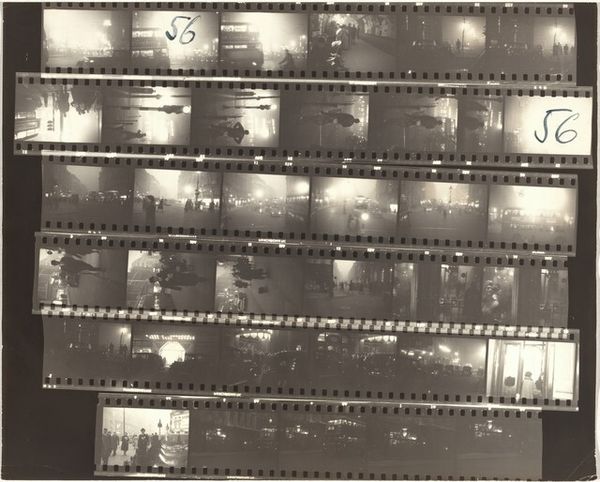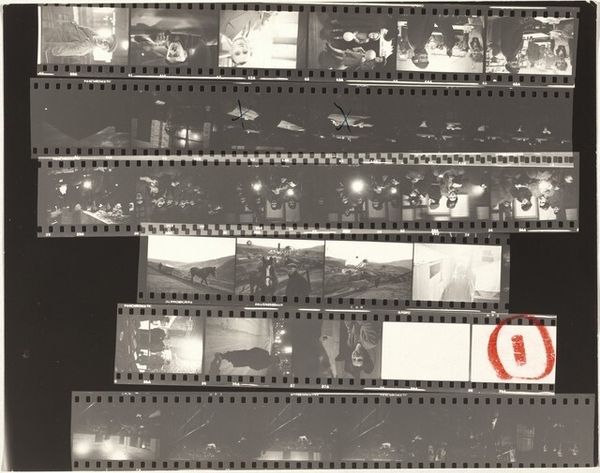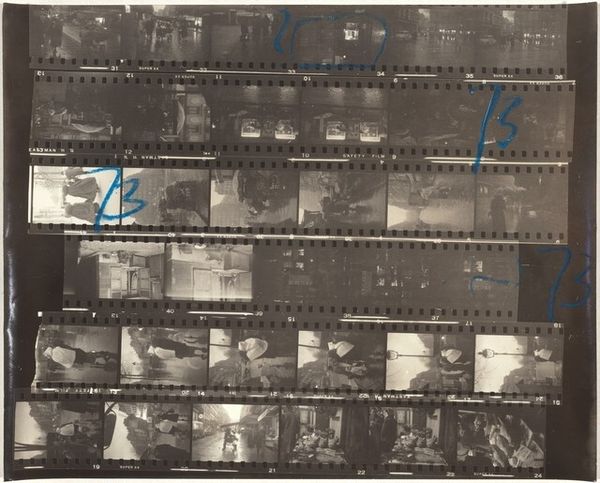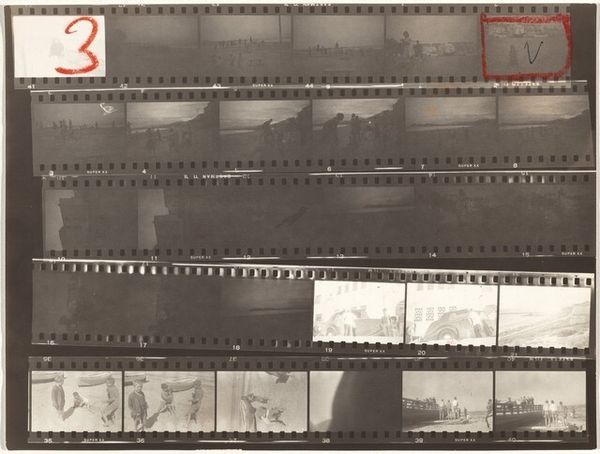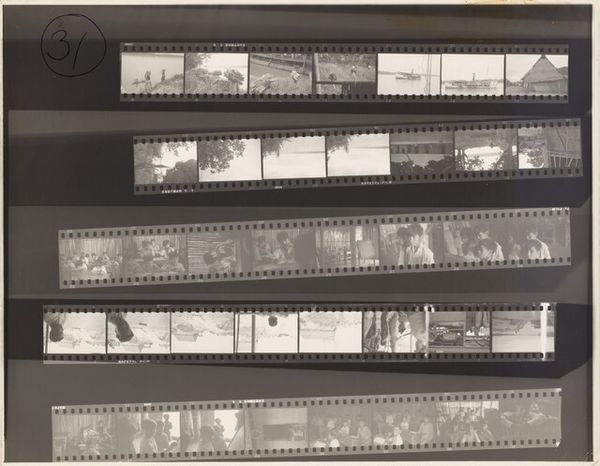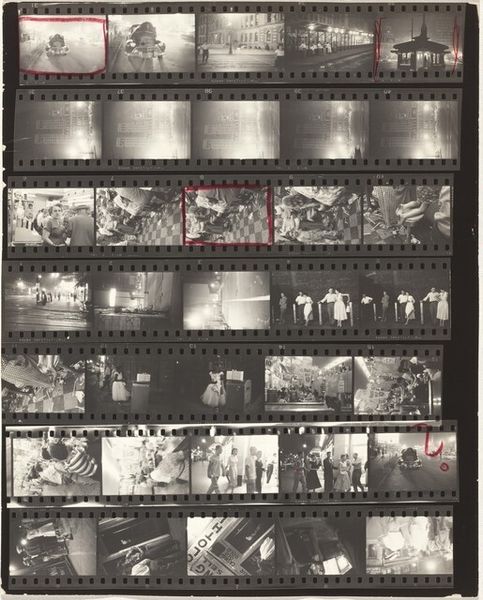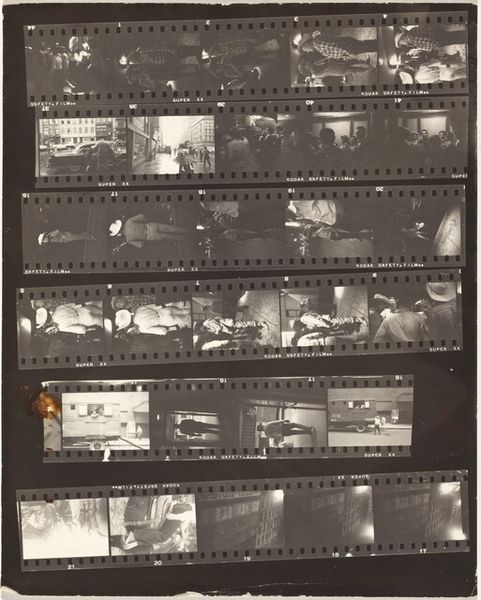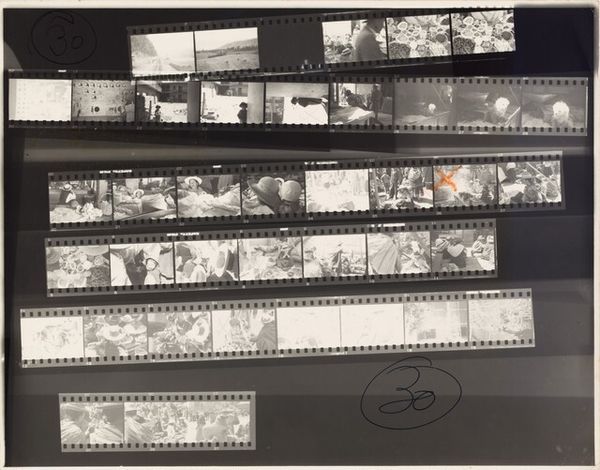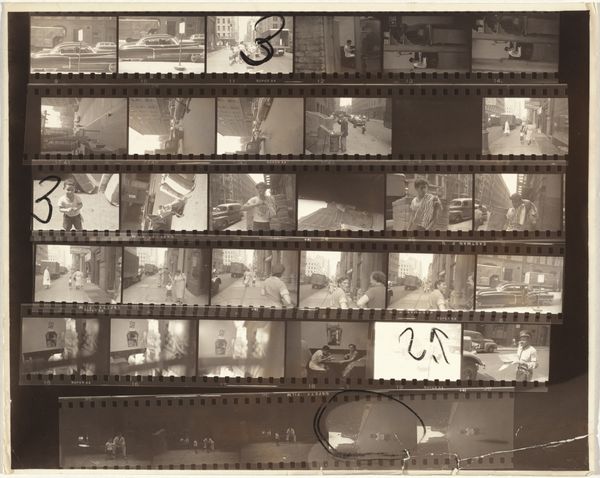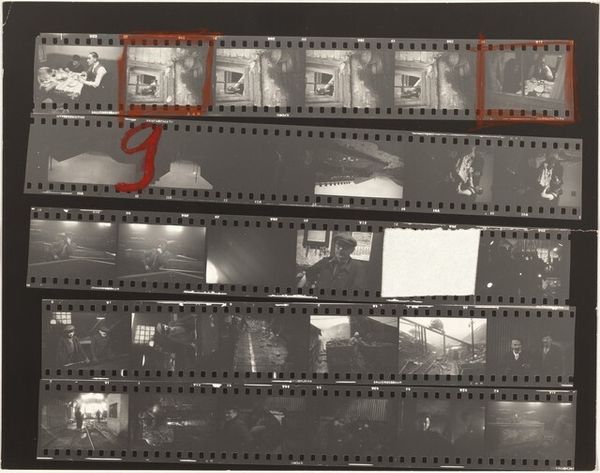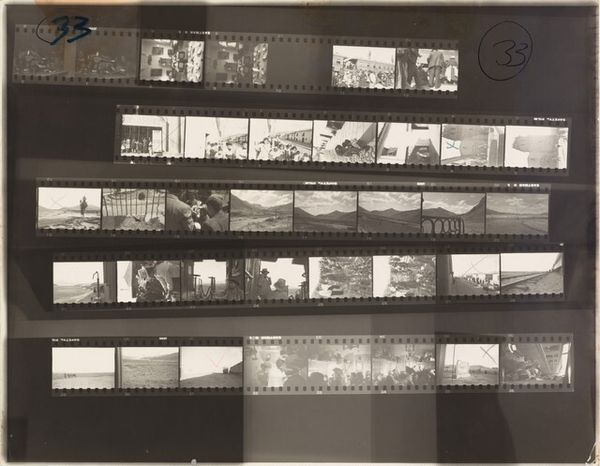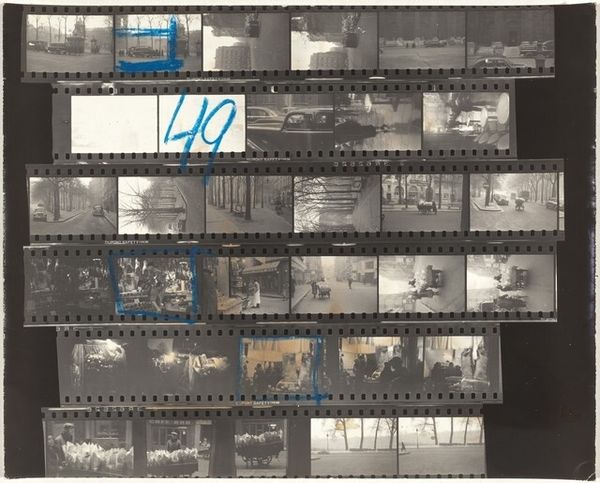
Dimensions: overall: 20.3 x 25.3 cm (8 x 9 15/16 in.)
Copyright: National Gallery of Art: CC0 1.0
Curator: Before us is "Paris 85B/Black White and Things 6", a gelatin-silver print by Robert Frank, created between 1951 and 1952. It's an interesting array of photographs, seemingly documenting fleeting moments of everyday life in post-war Paris. What are your initial impressions? Editor: The image is a film strip, capturing a series of snapshots. I see fragments of human figures, cityscapes, interiors. The overall feeling is fragmented and fleeting, capturing a feeling of discontinuity, as if memory itself were being presented. The blue ink markings adds another layer of coded meaning to each shot, though. Curator: Absolutely. I think that discontinuous effect is key to understanding Frank's wider practice at this time. He sought to capture a certain immediacy, breaking away from the polished, staged photography that dominated the art world. It's really about subverting those narratives to tell a raw, human story. Editor: I am intrigued by the visual language at work. We see repeated images such as the solitary figure or anonymous gatherings in cafes, and begin to read them as codes rather than straightforward representation. The stark contrasts in black and white reinforce an atmosphere that I’d even describe as dream-like. Curator: Dreams perhaps fueled by anxieties of the era. This work resonates with post-war trauma. If we look closely, Frank often frames his subjects from unconventional angles, reflecting a disruption of traditional perspectives of class, gender, and social dynamics. His lens seems to search for truths obscured by power. Editor: You make an important point there about the social climate of the time imprinting itself onto visual culture and iconography. The cityscapes here feel melancholic. Though, I wonder if Frank deliberately employed familiar symbols, but imbued them with ambiguity and a slightly unsettling affect. Curator: Precisely! It reflects a generation grappling with identity and disillusionment amidst significant political and social upheavals, yet in small ways as seen in street interactions and other daily encounters. These are powerful, silent testimonies. Editor: There's also that hand-drawn doodle in the upper-right corner—another layer on the meaning. What does that symbol mean, in relation to Frank's urban observations and personal interpretations of symbols? Curator: In viewing the work, and particularly that hand-drawn sign, we can recognize that meaning is contingent, a collaboration of sorts. And if there's one thing Frank seems to suggest, it's the very real human cost in trying to fit the complexities of life into tidy stories. Editor: It definitely adds a personal mark. Considering the symbols Frank uses in his photograph, this particular one reveals a lot about how he sees the reality he photographs. The whole piece now, I realize, is a personal collection of emotions within these shots, rather than being truly representational of its time.
Comments
No comments
Be the first to comment and join the conversation on the ultimate creative platform.
